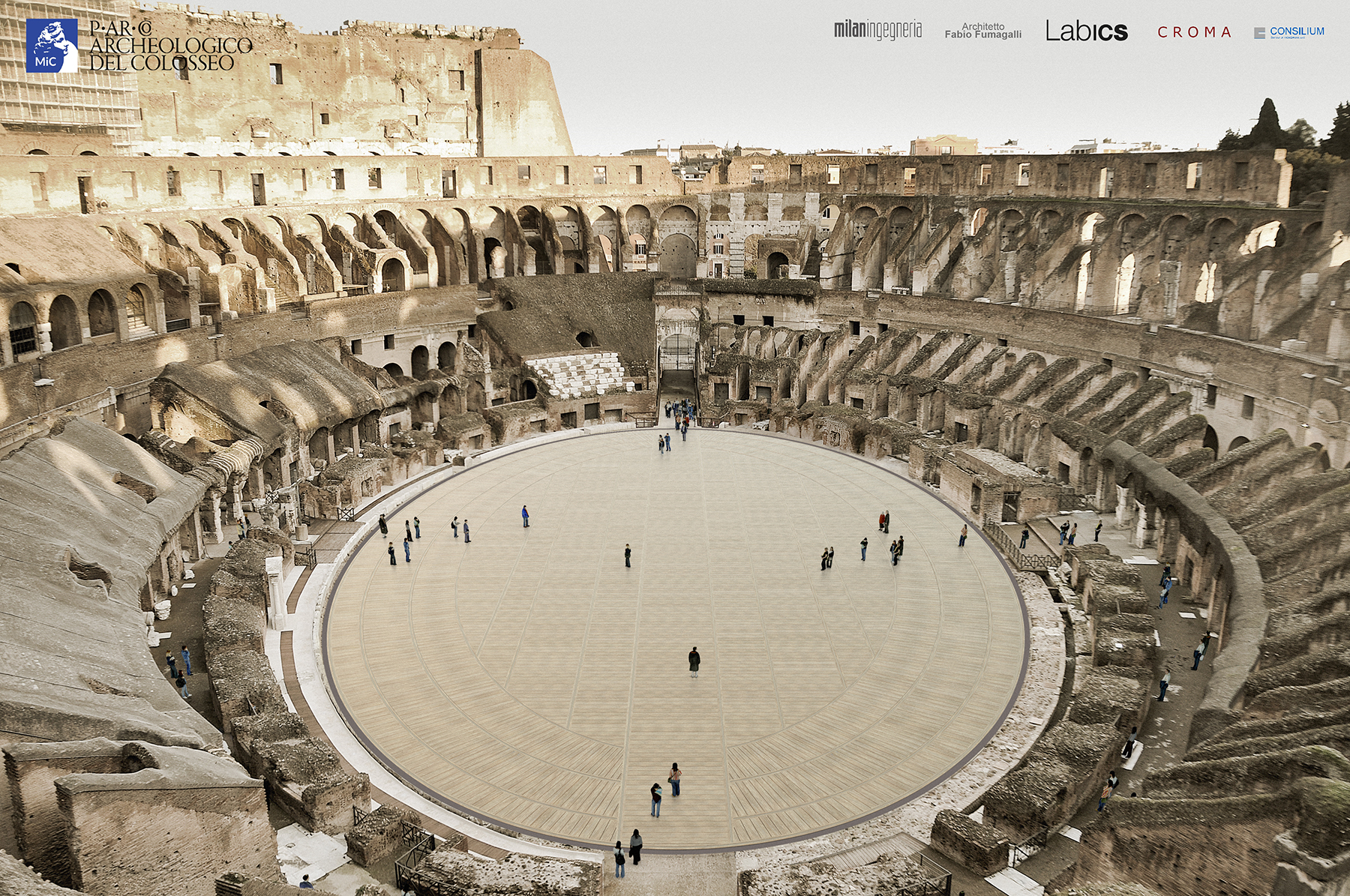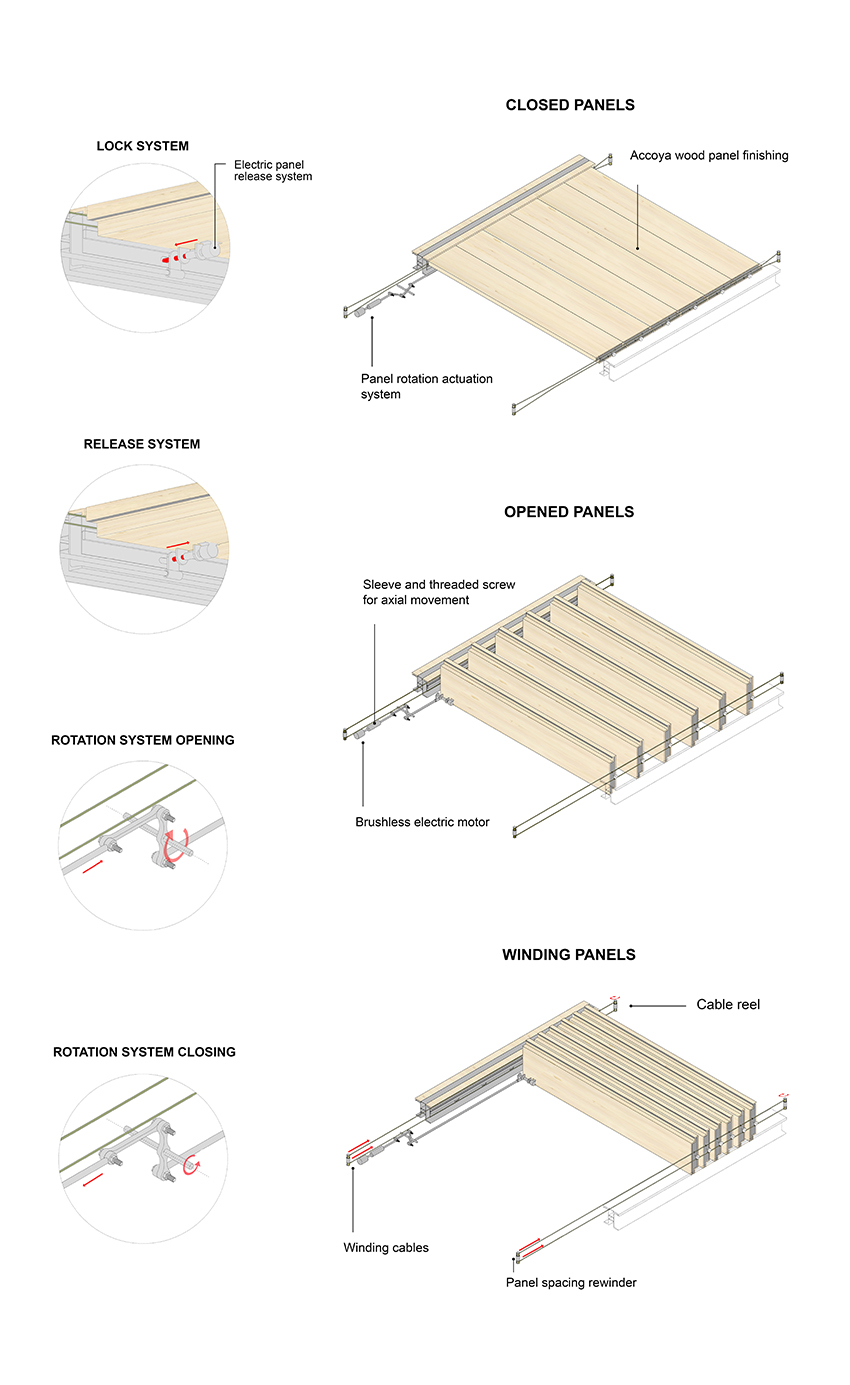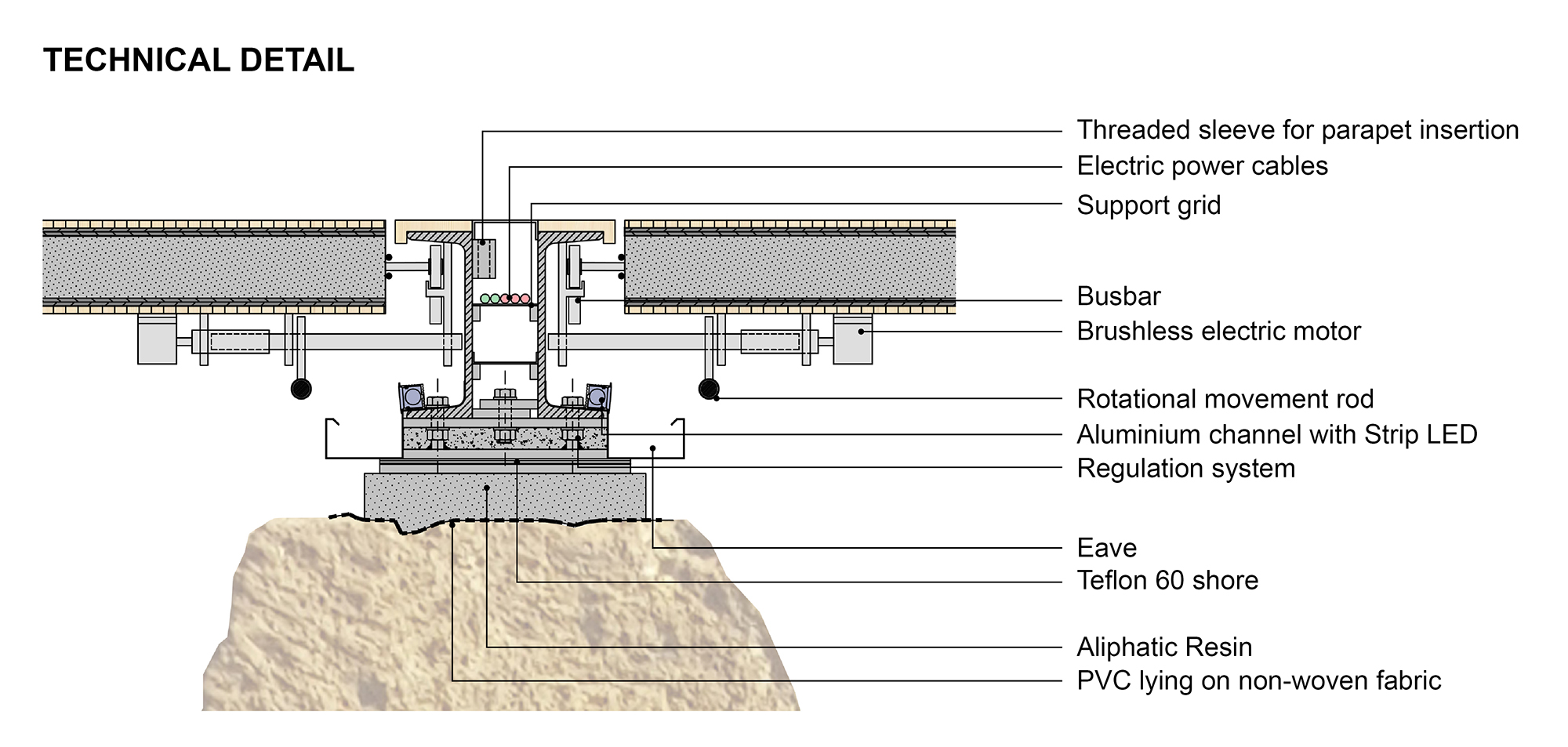By Robert L. Reid
In ancient Rome, the giant arena known as the Flavian Amphitheater — which the modern world calls the Colosseum — featured a system of trap doors in its sand-covered wooden floor so that wild animals could be brought to the surface to fight (or just eat) the waiting gladiators or prisoners. So it’s historically fitting that a new wooden floor system planned for the ruins of the Colosseum will feature the ability to open up and reveal the monument’s underground structures.
Colossal competition
A design competition for the new Colosseum floor project was launched at the end of 2020 by the Italian Ministry of Culture, and the winning design was announced in May.
The 15-million-euro ($17.8 million) project is expected to begin later this year and be completed during 2023. The competition was won by a design team that included the engineering and architecture firm Milan Ingegneria SpA, of Milan, and the Rome-based architecture firm Labics Srl. Architect Fabio Fumagalli, of Rome, is also involved in the project, and Heinz-Jürgen Beste, of the German Archaeological Institute in Rome, will serve as an archaeological consultant.
The Colosseum is operated and maintained by the Parco Archeologico del Colosseo, which was established by the culture ministry to operate and maintain the arena’s ruins and other monuments in the central archaeological areas in Rome.
Completed in A.D. 80, the Colosseum is an oval-shaped structure made from limestone, a volcanic rock known as tuff, concrete, and bricks. In ancient times, the Colosseum rose four stories tall and could hold more than 85,000 spectators. Nearly 2,000 years later, it remains a popular attraction in Rome; prior to the COVID-19 pandemic it drew more than 20,000 visitors each day, according to the floor project’s press kit.
Masonry and mechanisms
The arena floor measures 86 m by 54 m. Its original covering was supported on a series of masonry walls that formed the various underground spaces, including more than a dozen corridors and various chambers, holding cells and cages, and wooden elevators — operated by a system of winches and pulleys that hoisted animals and people to the surface. Over the years, the wooden floor was removed and eventually the underground spaces were filled in with dirt and rubble. Excavations to reopen these underground spaces, known as the hypogeum, started in the 19th century and continued into the first half of the 20th century. (Modern visitors are able to tour these underground spaces.)
The new arena floor will be constructed at the same level as the original floor to “integrate seamlessly with the monument,” explains the project press kit.
The flooring system will feature lightweight stainless steel elements and a series of rotating, retractable composite panels made with a carbon fiber core and clad in a sustainably harvested, high-performance wood that is processed to increase its strength and durability, the press kit explains. The wood material will require little maintenance and be “resistant to bacteria, xylophagous insects, and deterioration caused by adverse weather conditions.”

Movable floor
The new floor system will be supported on the ancient walls of the hypogeum but will feature multiple layers — including portions made from polytetrafluoroethylene and polyvinyl chloride atop a non-woven fabric — to “chemically and physically insulate the underground masonry structures and make them resistant to horizontal seismic stress and dynamic forces generated by visitors walking on the arena floor,” according to the press kit.

When fully extended in their horizontal position, the wooden panels, or slats, will completely cover the arena space, creating a solid, walkable floor. But like a sort of mechanized window blind, the slats will be operable by electric motors that can rotate some or all panels upward to reveal the underground spaces and provide natural ventilation and illumination.
The slats can be opened and closed in various configurations, opening a portion of the hypogeum at a time or retracting completely to expose the entire underground structure for observation or access by visitors or conservationists. The system will also be completely removable for maintenance work without affecting the original structures.
The new floor system will be remote-controlled and capable of being activated several times a day.
Sensors and conservation assistance
When closed, the floor system will provide artificial illumination for the underground areas and feature a system to collect rainwater for use in the public restrooms. Sensors, managed by an artificial intelligence system, will monitor the temperature and humidity levels in the hypogeum to ensure the most suitable conditions for the conservation of the original structures. The sensors will interact with a mechanical ventilation system that features variable-speed electric fans installed at 24 recessed areas around the arena perimeter. If necessary, the fans can completely renew the air within the underground spaces in just 30 minutes, the press kit notes.
This microclimate system will also “be able to determine the configuration of the arena floor and compare the data of the parameters based on time, duration, quantity, and type of opened surface with the ventilation management system,” according to the press kit.

Ultimately, the new arena floor system will enable “better conservation and protection of the archaeological structures in the underground areas, while reconstructing the original appearance of the monument and the complex system of the underground areas,” the press kit noted.



